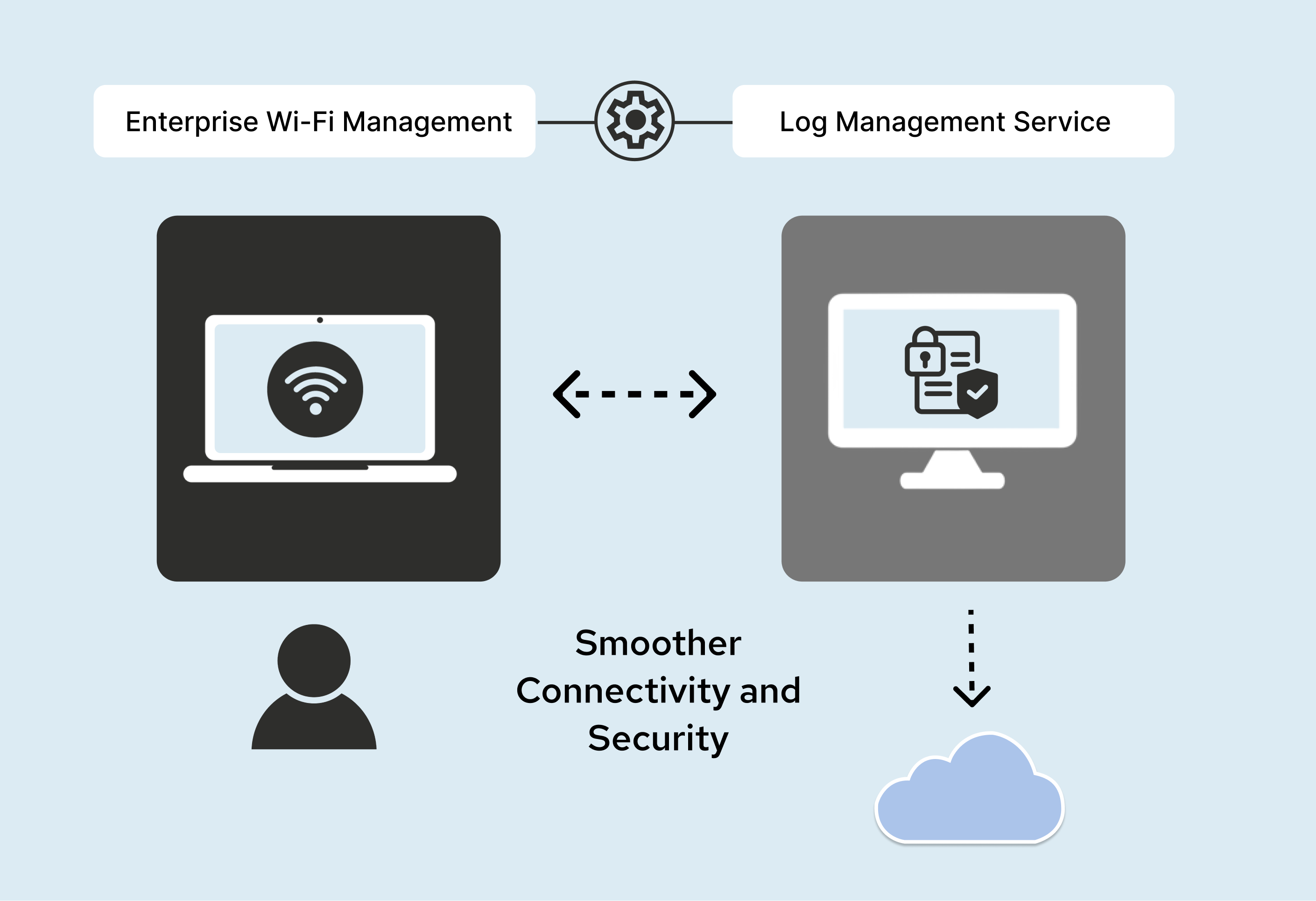Reliable wireless connectivity and security work jointly in modern enterprise networks. Enterprise Wi-Fi management ensures smooth connectivity for employees and guests, while log management services provide visibility and control across the infrastructure.
Here’s how the two work together effectively:
What is an Enterprise Log Management Service?
An enterprise log management service collects, stores and analyzes logs from IT systems such as wireless controllers, access points, authentication servers and user devices. This data helps detect issues, investigate incidents and meet compliance requirements.
Key Functions:
- Centralized Log Collection: Collects logs from Wi-Fi devices and network systems into a single platform.
- Standardization & Parsing: Converts logs into a readable format for efficient analysis.
- Secure Storage: Retains large volumes of data securely for audits or future analysis.
- Real-Time Alerts: Notifies teams of unusual activity like failed login attempts or disconnections.
- Search & Analysis: Helps identify patterns, troubleshoot issues and generate insights.
- Reporting & Compliance: Supports policy enforcement, audit trails and regulatory requirements.
How Log Management Enhances Wi-Fi Management
- Improved Security: Detects rogue devices, unauthorized logins and DDoS attempts in real-time.
- Faster Troubleshooting: Identifies connectivity issues using logs from APs and controllers.
- Operational Visibility: Offers insights into user behavior, access patterns and network load.
- Compliance Support: Maintains records required for industry regulations and audits.
- Incident Response: Accelerates root cause analysis during security events or outages.
- Capacity Planning: Historical data helps plan for bandwidth upgrades and scaling infrastructure.
Practical Scenarios
- Rogue Access Detection: Flags unknown SSIDs or MAC addresses on the network.
- Connectivity Issues: Pinpoints causes like DHCP errors or interference via AP logs.
- Insider Threats: Highlights suspicious internal access attempts to sensitive systems.
- Audit Readiness: Provides clean, organized Wi-Fi logs for external compliance checks.
Frequently Asked Questions (FAQs)
What is the role of enterprise log management in Wi-Fi networks?
Enterprise log management captures and analyzes data from Wi-Fi components like access points, controllers and authentication systems. It helps monitor performance, detect security threats and meet compliance requirements.
How does log analysis help in troubleshooting Wi-Fi connectivity issues?
By reviewing logs from access points and connected devices, IT teams can identify root causes of connectivity problems such as signal drops, DHCP failures or authentication errors to ensure faster resolution.
Can log management services detect security threats on enterprise Wi-Fi?
Yes. Real-time log monitoring helps detect threats such as rogue access points, unauthorized access attempts or suspicious user behavior, allowing proactive response and mitigation.
Why is integrating Wi-Fi and log management important for compliance?
Combining these systems ensures all Wi-Fi activity is logged, stored and auditable. This is essential for meeting regulatory standards and preparing for security audits.
Does Quantum Networks offer integrated Wi-Fi and log visibility?
Yes. Quantum Networks solutions enable smoother Wi-Fi infrastructure management while offering centralized log visibility to empower IT admins to monitor, troubleshoot and secure wireless environments efficiently.
Conclusion
When Wi-Fi management tools and log management services are used together, they provide a complete view of your wireless network to support security, performance and compliance. This combination is essential for IT teams to manage complex environments.
